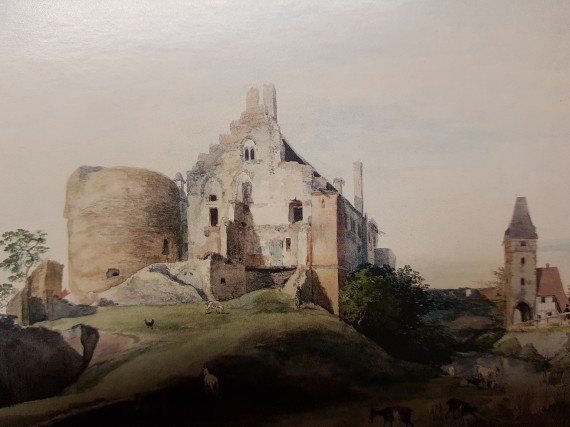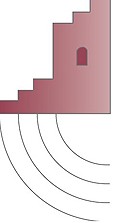The History of the castle Hayn

The castle Hayn was originally built as the seat of the imperial stewards (“kaiserliche Reichsvögte”) who were in charge of the large protected forest of Dreieich (“Wildbann”) which was rich in wildlife. ( According to the ”Dreieicher Weisthum”, a law book issued by Emperor Ludwig of Bavaria in 1338, the area spread from from the left shore of the river Main to and across Darmstadt and from the right shore of the river Main along the river Nidda as far as Aschaffenburg). The emperor himself visited the castle only for hunting in its wide forests.
The first steward mentioned in a document and constructor of the stand-alone tower castle was Eberhard von Hagen whose family was given the name of Hagen from this office in Hayn (the word “Hagen” stands for an enclosed yard in mediaeval German). About 1080, he built the 5-storey residential tower on a small island in the Hengstbach swamps. It was surrounded by high curtain walls and a wide moat.
Later it became family seat to the influential Lords of Hagen-Münzenberg (Münzenberg Castle in the Wetterau region was built in 1160 by Kuno I, the great -grandchild of Eberhard. Since then, the family carried the name Münzenberg as well) and was further developed to serve as a “Reichslehensburg” (a castle owned by the emperor, but inhabitated and maintained by a steward chosen by the emperor) until 1180. The castle tower was integrated in the curtain wall system; a round donjon (“Bergfried”), a great hall (“Palas”) and a small chapel were added. The walls were surrounded by a wide moat.
The new castle staff (“Burgmannen”) were settled beyond the castle (“Hofreiten”). Next to the castle complex, the steward’s residence and storage housing were built ( “Fronhof”) with attached quarters for young noblemen (“Junkerhaus”), and large kennels for a special breed of hounds, the “Bracke”. ( The only remaining building of these times, the “Junkerhaus”, is now used as a restaurant, the “Faselstall”.)
The staff quarters (“Burgmannenstadt”) were surrounded by ramparts and a ditch with only one access: the Romanesque town gate, later called “middle gate” (“Mitteltor”), which has not remained.
After the extinction of the von Hagen-Münzberg family in 1255, the castle fell to various sharing heirs (Ganerbteilung). Till 1286, the von Falkenstein family ruled 5/6 shares of the castle while 1/6 shares remained with the von Hanau family. In the following times, the castle was further extended. Palas and church were enlarged; other smaller residential buildings within the castle walls followed. A massive gate tower safeguarded the access to the castle.
The first mention of citizens (lat. “cives”) in a place called Hagen ( “Hayn” ) dates from 1256, but town rights may well have been granted years earlier.
In 1350, the town was extended by a craftsmen's settlement, (the “Oberhain”), and with the new construction of the upper gate ( “Obertor”) and the city walls, the ancient city (“Altstadt”) spread to the size we know today.
In 1418, also the Falkenstein family became extinct in male line. The heritage of Hayn was split between the Lords of Isenburg, Sayn and Hanau. In 1486, Earl Ludwig II of Isenburg acquired the Sayn family’s share of the heritage. With further conversions and the addition of a new lower gate, (“Untertor”) close to the pond in 1450, the Late-Gothic character of the castle was established.
But by the 16th century latest, permanent residence in the castle came to an end.
In the 18th century, the increasingly impoverishing town gave up maintaining the fortification system. In 1783, the middle gate and the city walls were pulled down. The uninhabited castle was used as a quarry for road construction. But in a 6-year lawsuit, the Count of Isenburg-Philippseich, sole owner of the castle since 1710, could prevent total demolition of the castle.
In 1816, all estates of the Lords of Isenburg fell to the Grand Duchy of Hess-Darmstadt, with exception of the Hayn castle. The Lords of Isenburg sold the castle in 1931 to the Geschichts- und Heimatverein e.V. Dreieichenhain who have committed themselves to the restoration and preservation of the castle complex since then.
Translation: Gisela Bender
